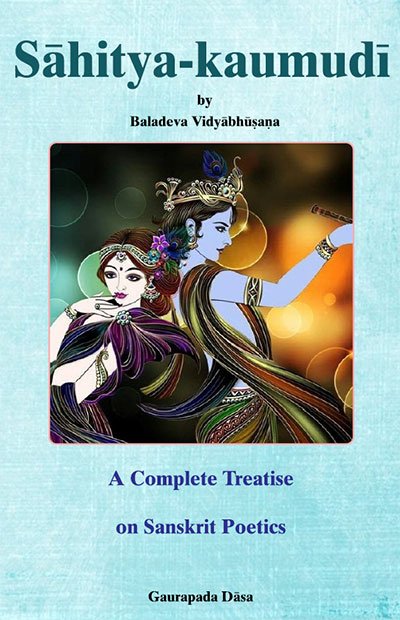Sahitya-kaumudi by Baladeva Vidyabhushana
by Gaurapada Dāsa | 2015 | 234,703 words
Baladeva Vidyabhusana’s Sahitya-kaumudi covers all aspects of poetical theory except the topic of dramaturgy. All the definitions of poetical concepts are taken from Mammata’s Kavya-prakasha, the most authoritative work on Sanskrit poetical rhetoric. Baladeva Vidyabhushana added the eleventh chapter, where he expounds additional ornaments from Visv...
Text 4.44
तत्र देव-विषया यथा,
tatra deva-viṣayā yathā,
Of the two, this illustrates a rati whose object is the Lord:
divi vā bhuvi vā mamāstu vāso narake vā narakāntaka prakāmam |
avadhīrita-śāradāravindau caraṇau te maraṇe’pi cintayāmi ||
divi—in heaven; vā—whether; bhuvi—on earth; vā—or; mama—my; astu—may there be; vāsaḥ—residence; narake—in hell; vā—or; naraka-antaka—O killer of Naraka; prakāmam—at will; avadhi-īrita—are brought to an end; śārada—autumnal; aravindau—by which the lotuses; caraṇau—two feet; te—Your; maraṇe—at the time of death; api—even; cintayāmi—I contemplate.
O killer of Naraka, let me take residence in heaven, on Earth, or in hell, as You like: Even at the time of death, I shall contemplate on Your feet, which excel autumnal lotuses. (Mukunda-mālā-stotra 8)
Commentary:
The above is Viśvanātha Kavirāja’s example of deva-viṣayā rati (affection for the Lord) (Sāhitya-darpaṇa 3.261). Rūpa Gosvāmī cites the verse to illustrates dāsya-rati (Bhakti-rasāmṛta-sindhu 2.5.29). Here nirveda is a vyabhicāri-bhāva.
